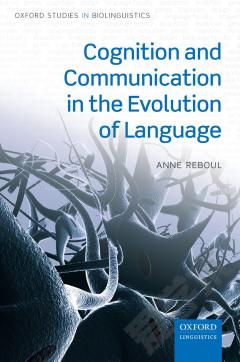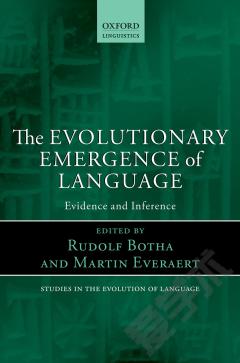The Interactional Instinct —— The Evolution and Acquisition of Language
----- 国际本能语言演变和习得
The Interactional Instinct: The Evolution and Acquisition of Language by Namhee Lee, Lisa Mikesell, Anna Dina L. Joaquin, Andrea Mates, & John Schumann. Oxford University Press, 2009. Reviewed by Bahiyyih L. Hardacre University of California, Los Angeles The currently more widely accepted idea that human language could have emerged and developed without the need for a specific gene for Universal Gram- mar (UG) is the major contribution of this book. Offering an evolutionary view on the neurobiology of language acquisition, it argues that language is a cultural artifact that evolves as from a complex adaptive system through human interaction. It claims that through the process of communicative exchanges, individuals organ- ize lexical items into structures, and if these are efficient, they are incorporated as part of this languageâs âgrammarâ. This seems to be a highly efficient practice as it ensures that such newly created forms fit the cognitive and motor capacities of the human brain before being incorporated. In this perspective, language has evolved to fit the brain and not the other way around, as advocated by supporters of the UG perspective. This book is divided into chapters written by professors and PhD students in the Applied Linguistics department at the University of California, Los Angeles, who are all members of the Neurobiology of Language Research Group (NLRG) at the same institution. The book has in total 7 chapters and delivers the content in a very straightforward manner: chapter 1 describes what complex adaptive systems are in order to show how language is one; chapter 2 lists evidence for language emergence, describing the creation of pidgins and creoles; chapter 3 anticipates the implications of interaction and the use of language in real life settings, as op- posed to what traditional linguists have done so far in terms of describing language through prefabricated structures; chapter 4 describes interactional readiness in infant-caregiver interactions, associating apparently innate behavior in neonates and chemical rewards in a neurobiological level; chapter 5 reinforces the interactional instinct concept showing how the need for affiliation coincides with the ability to affiliate; and finally, chapters 6 and 7 describe the role of affect in first language acquisition and in cognition, respectively. The first chapter, âGrammar as a Complex Adaptive Systemâ, begins by showing how Innatism can no longer be sustained by current findings in neuro- science, genetics and linguistics. The authors explain how nonlinear Complex Adaptive Systems (CAS) emerge from pattern formations out of chaos, analogi- cally describing what happens with an emerging language. In order to show how languages can be seen as CASâs, the authors apply all the principles of CAS, i.e., aggregation, multi-strata of building blocks, local and random interactions, tagging, Issues in Applied Linguistics © 2009 Bahiyyih L. Hardacre ISSN 1050-4273 Vol. 17 No. 2, 163-165
{{comment.content}}








 京公网安备 11010802027623号
京公网安备 11010802027623号